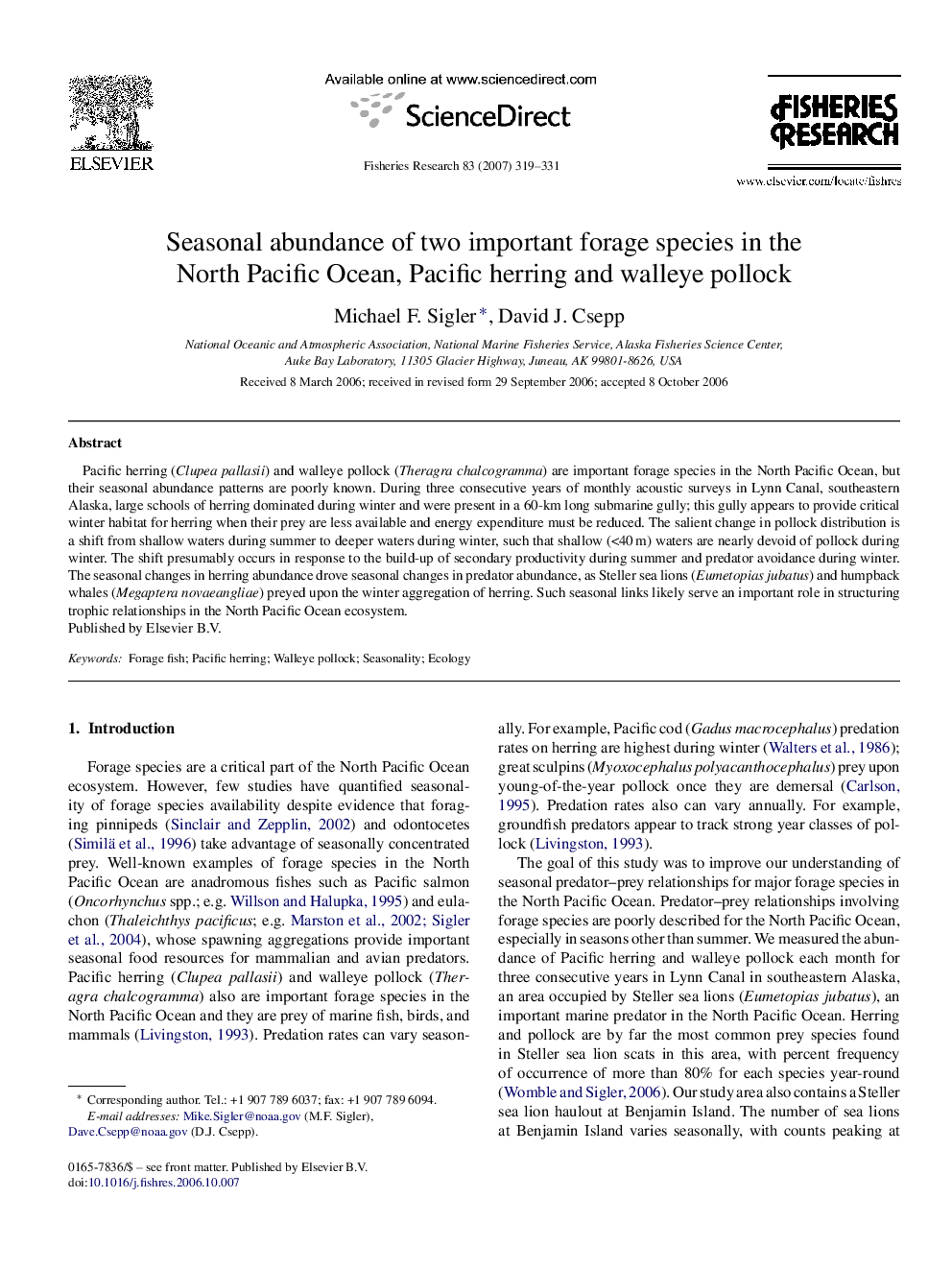| Article ID | Journal | Published Year | Pages | File Type |
|---|---|---|---|---|
| 4544874 | Fisheries Research | 2007 | 13 Pages |
Pacific herring (Clupea pallasii) and walleye pollock (Theragra chalcogramma) are important forage species in the North Pacific Ocean, but their seasonal abundance patterns are poorly known. During three consecutive years of monthly acoustic surveys in Lynn Canal, southeastern Alaska, large schools of herring dominated during winter and were present in a 60-km long submarine gully; this gully appears to provide critical winter habitat for herring when their prey are less available and energy expenditure must be reduced. The salient change in pollock distribution is a shift from shallow waters during summer to deeper waters during winter, such that shallow (<40 m) waters are nearly devoid of pollock during winter. The shift presumably occurs in response to the build-up of secondary productivity during summer and predator avoidance during winter. The seasonal changes in herring abundance drove seasonal changes in predator abundance, as Steller sea lions (Eumetopias jubatus) and humpback whales (Megaptera novaeangliae) preyed upon the winter aggregation of herring. Such seasonal links likely serve an important role in structuring trophic relationships in the North Pacific Ocean ecosystem.
